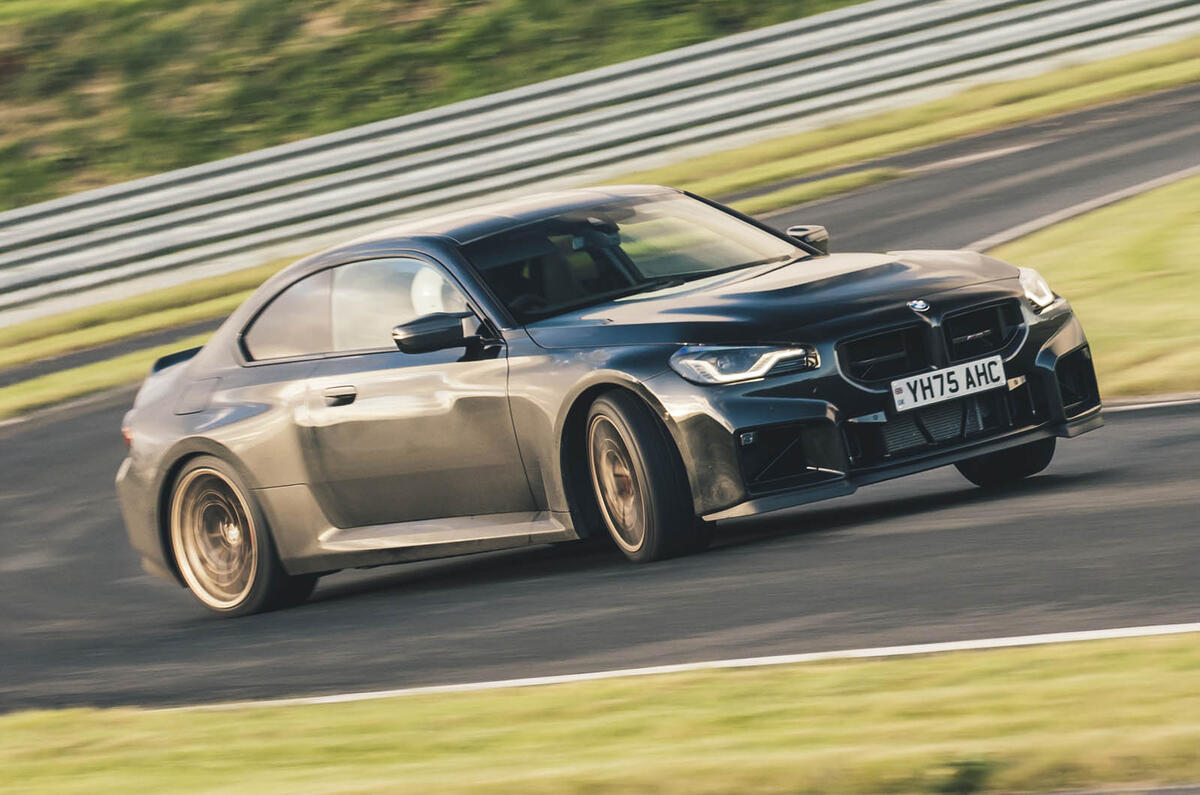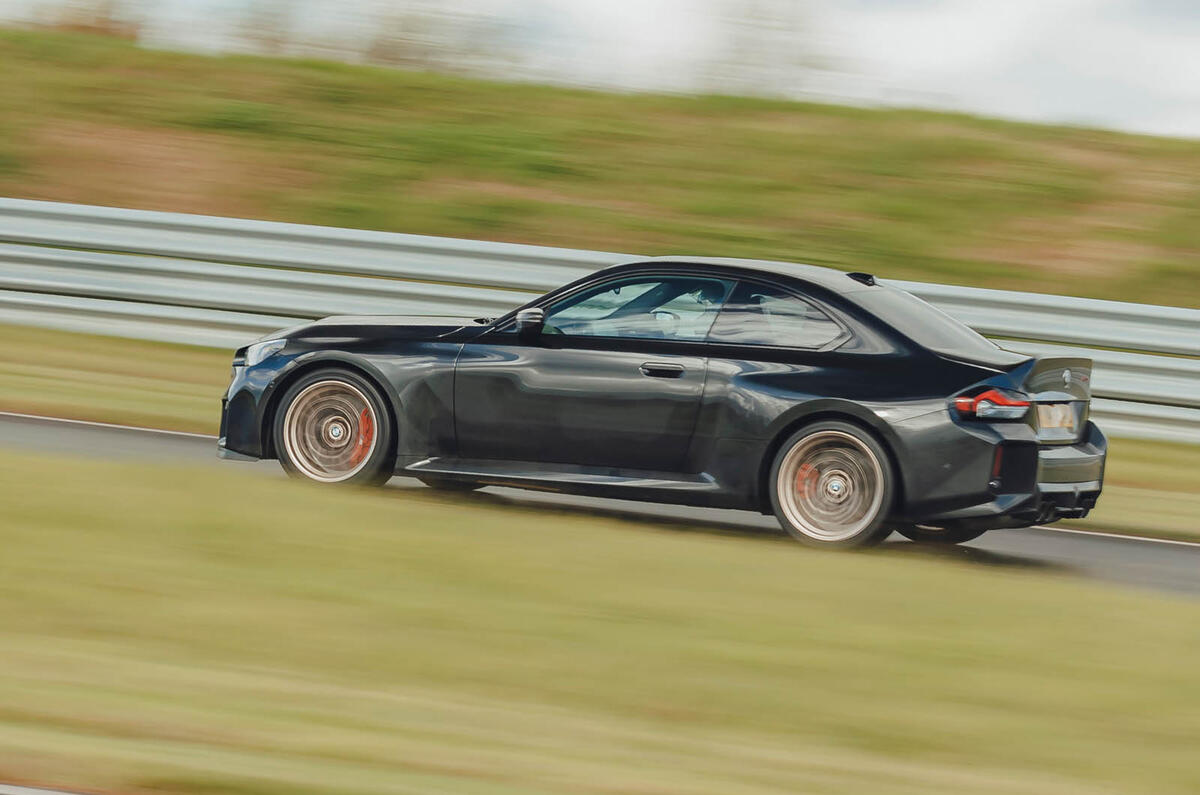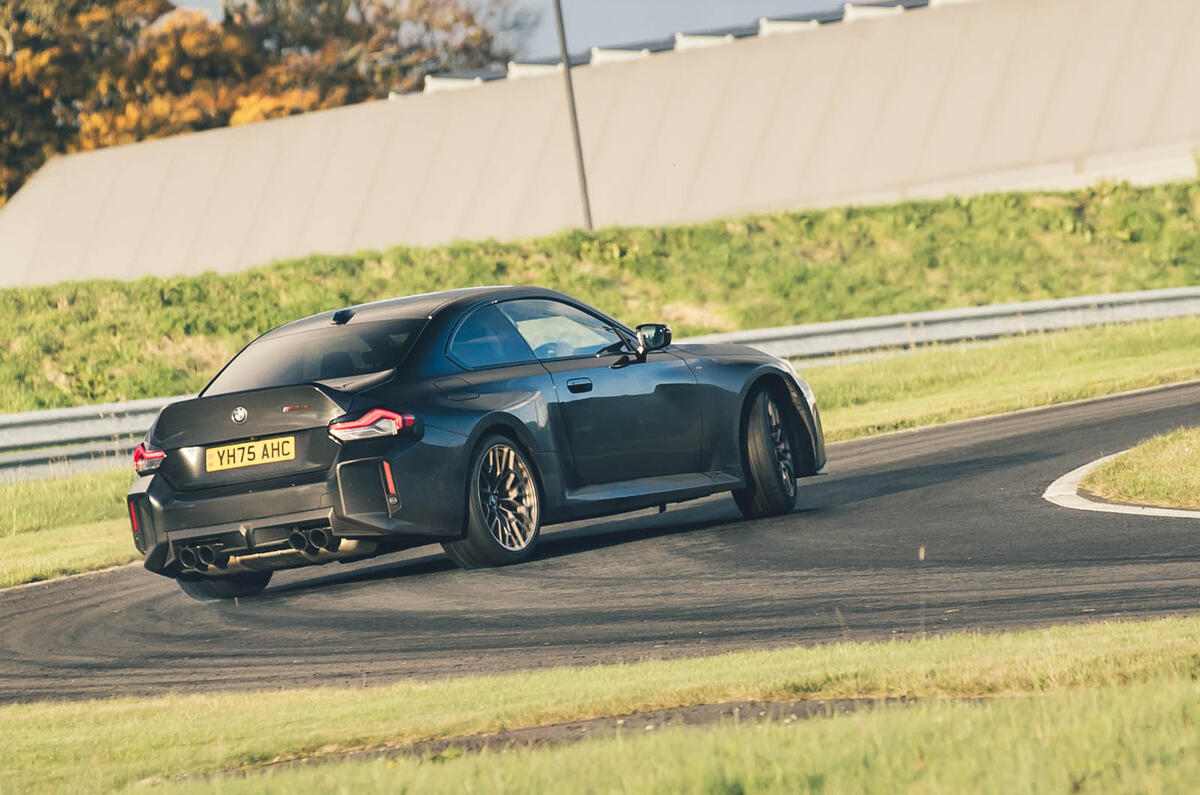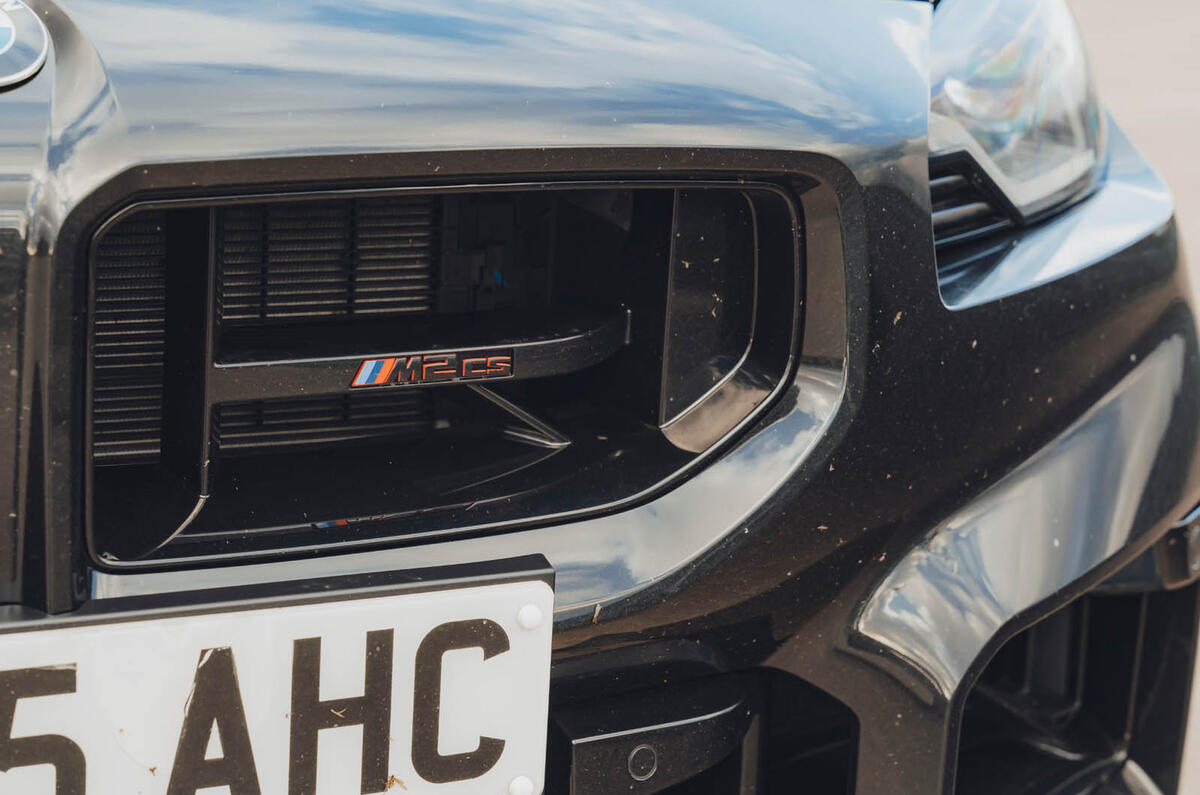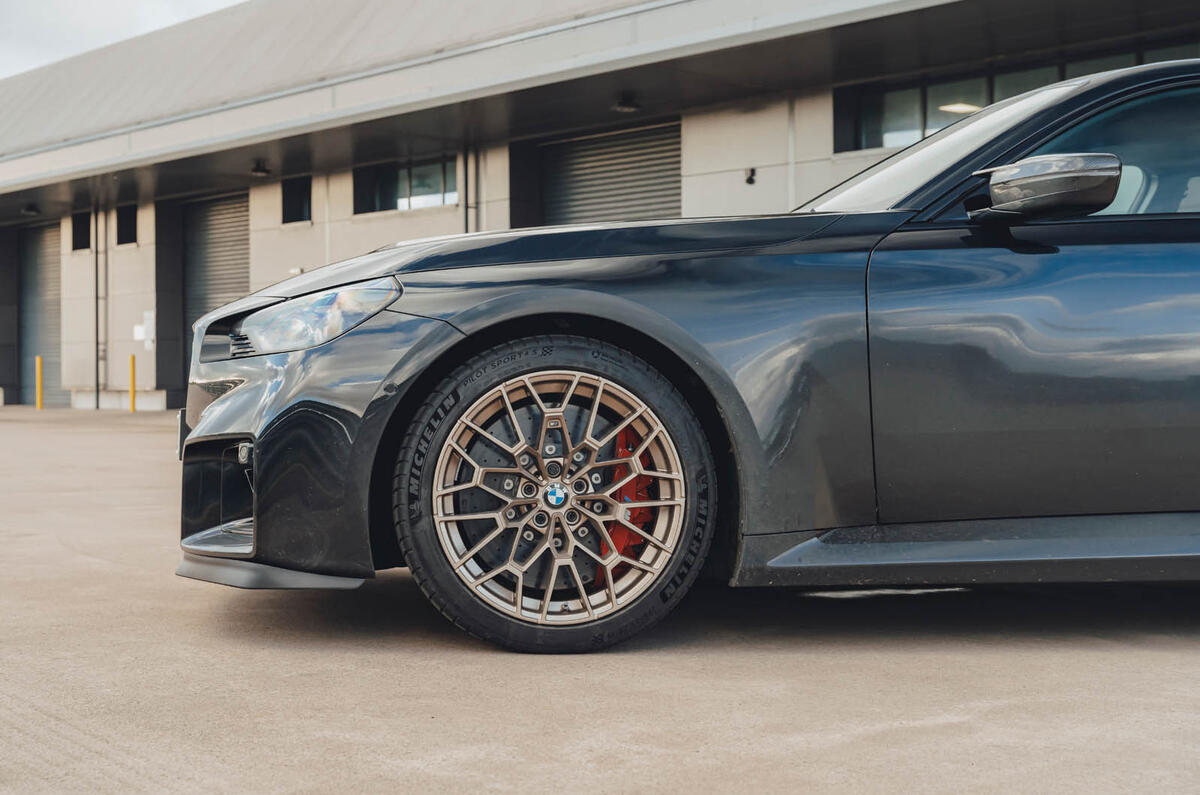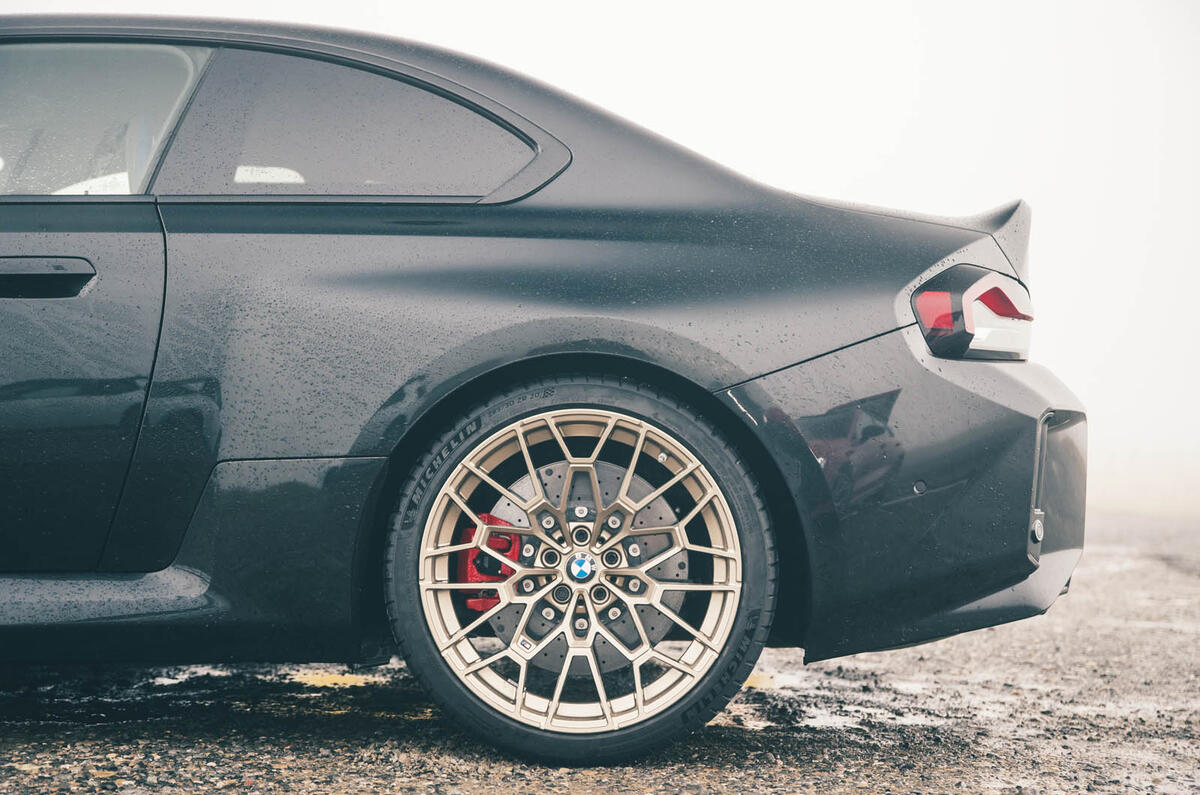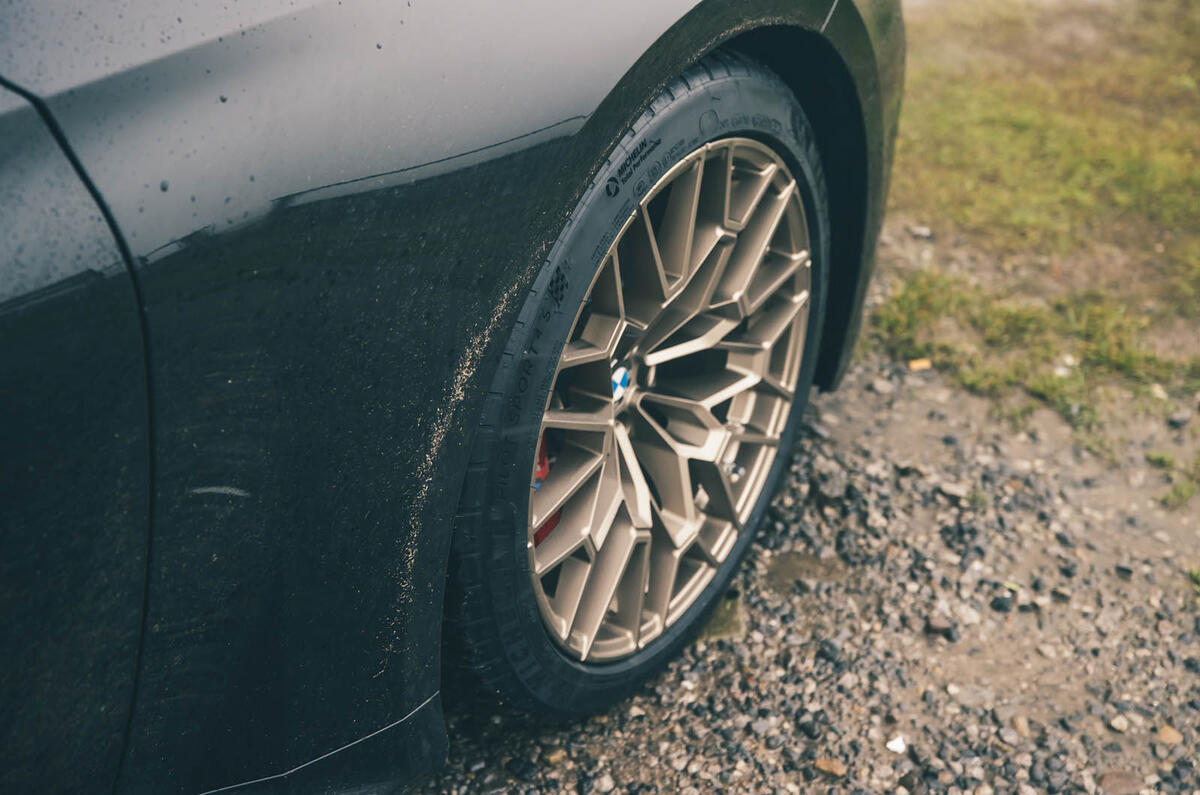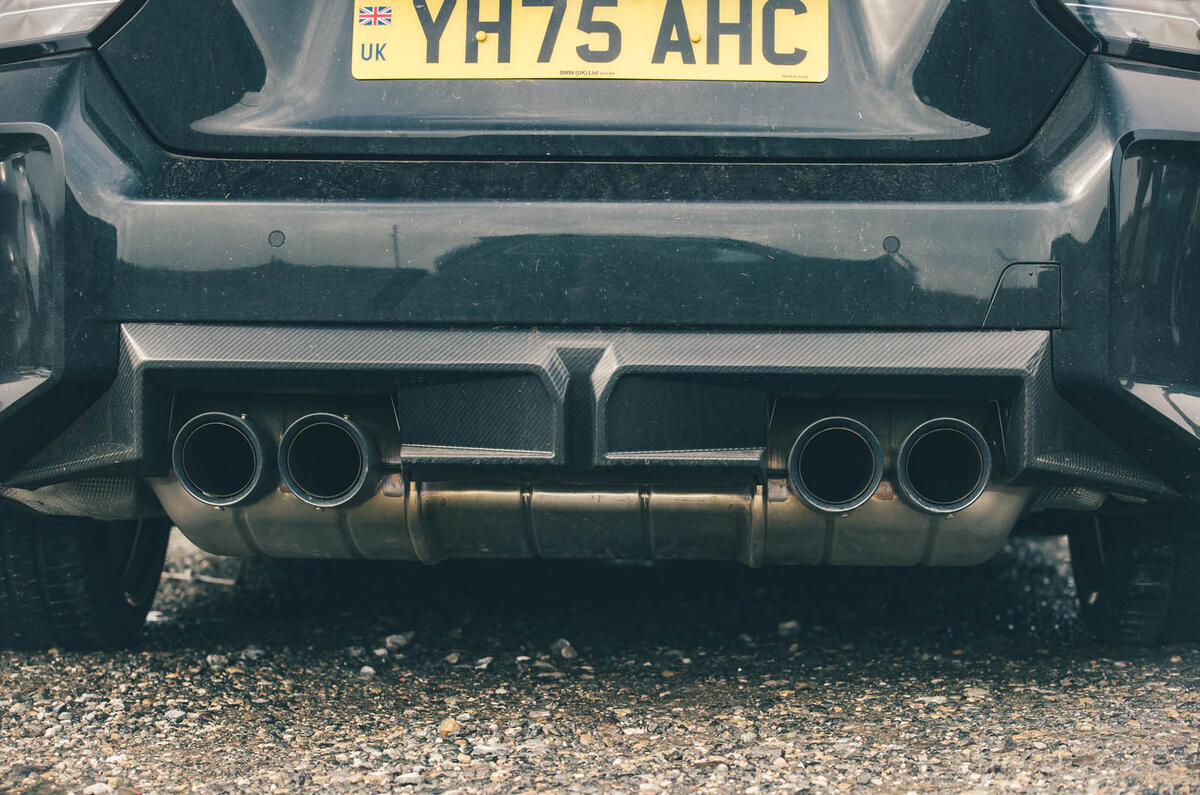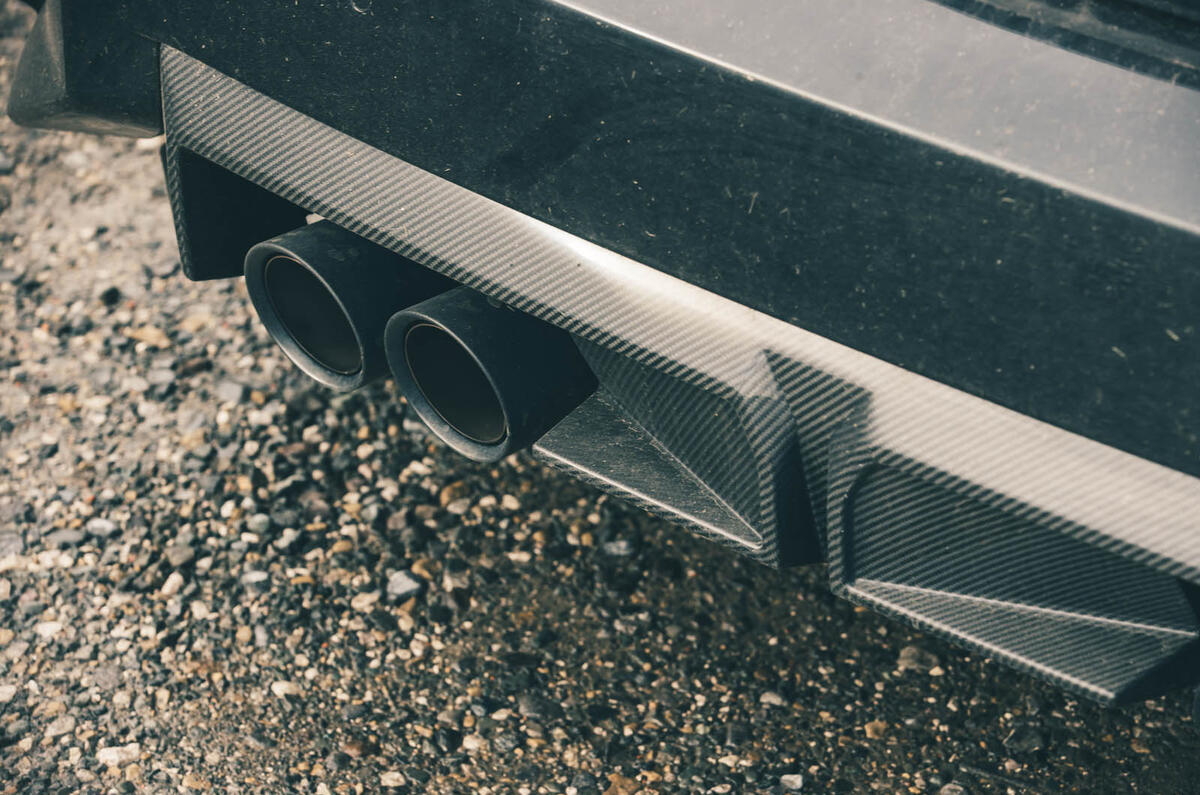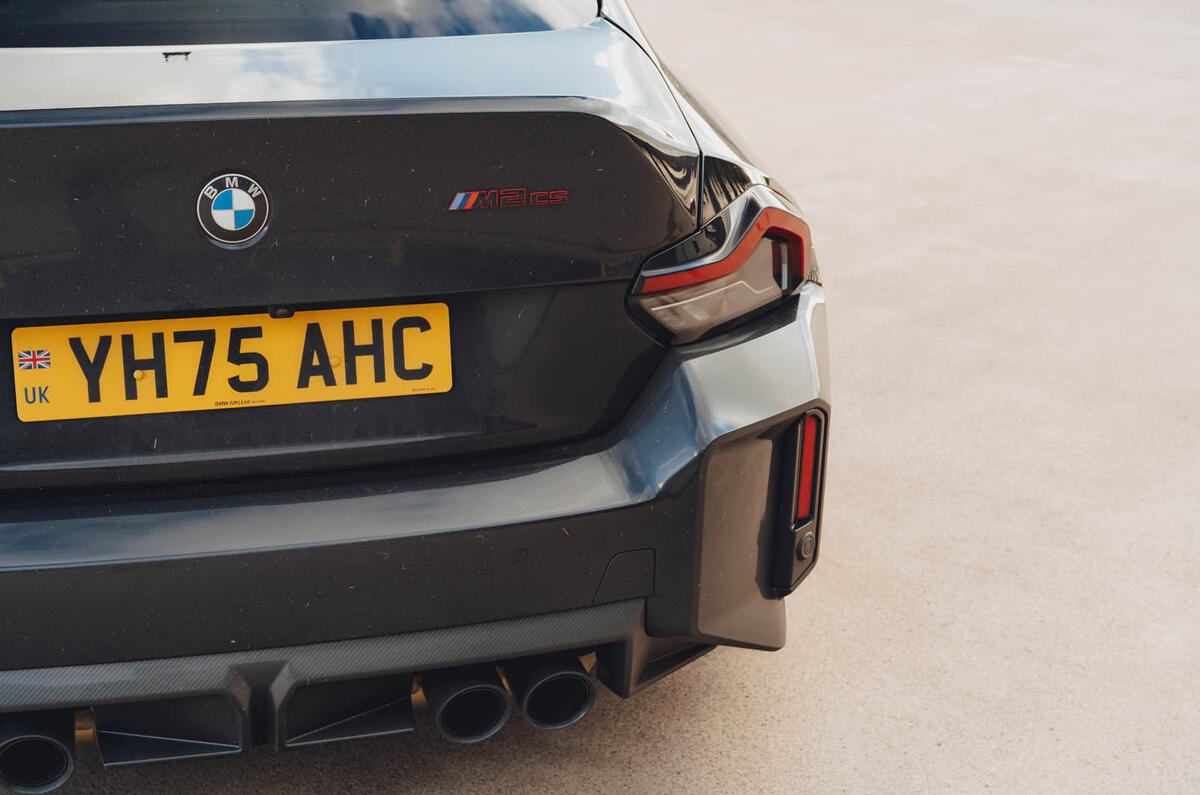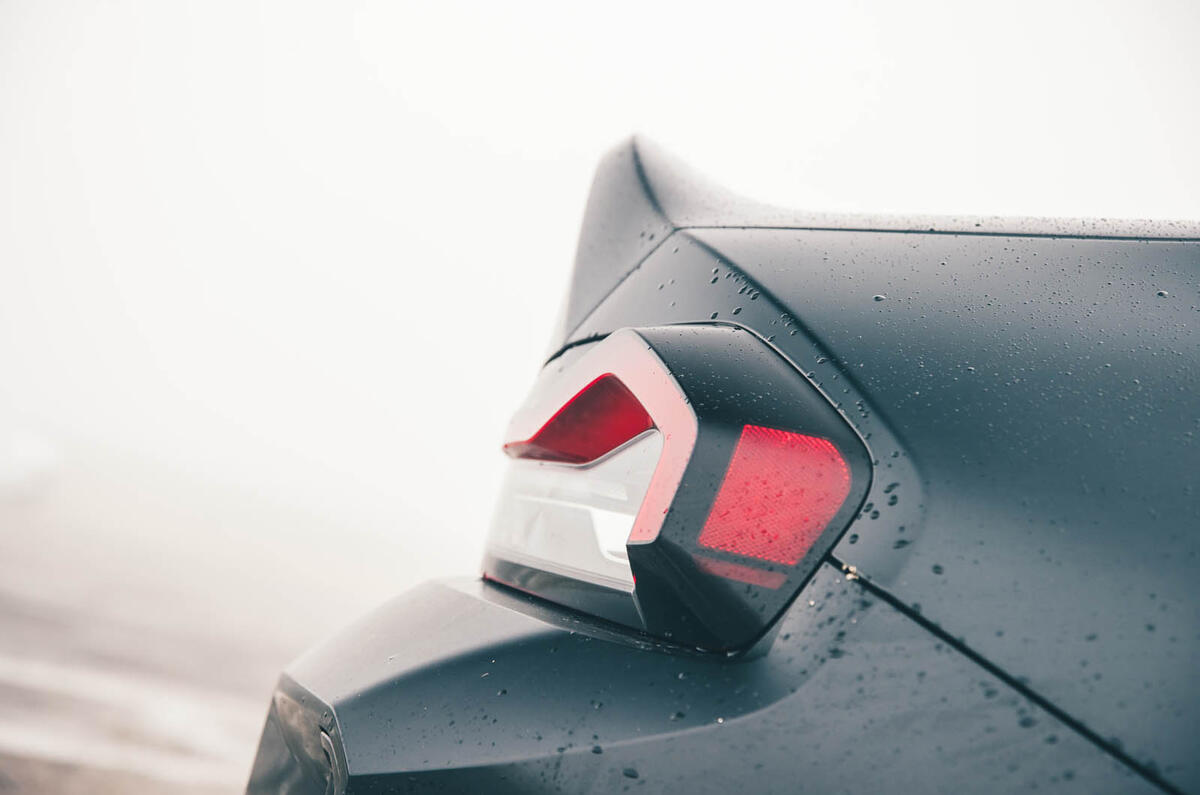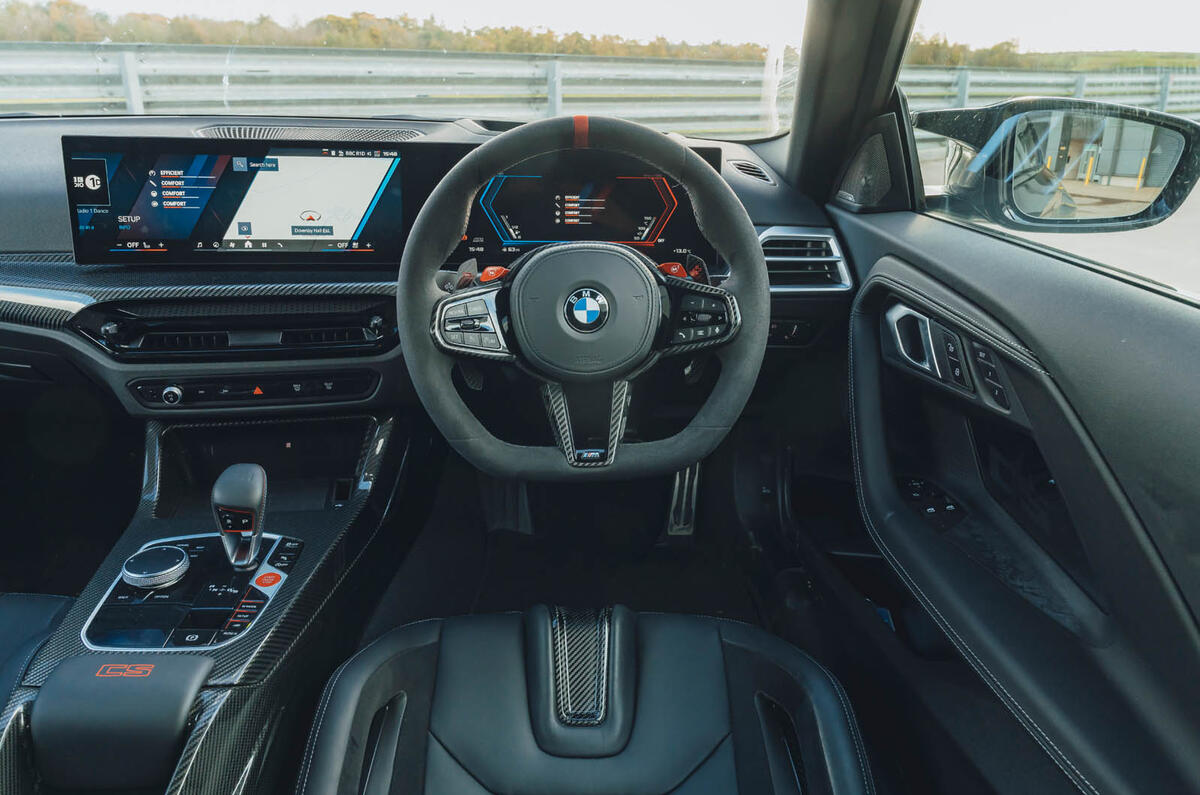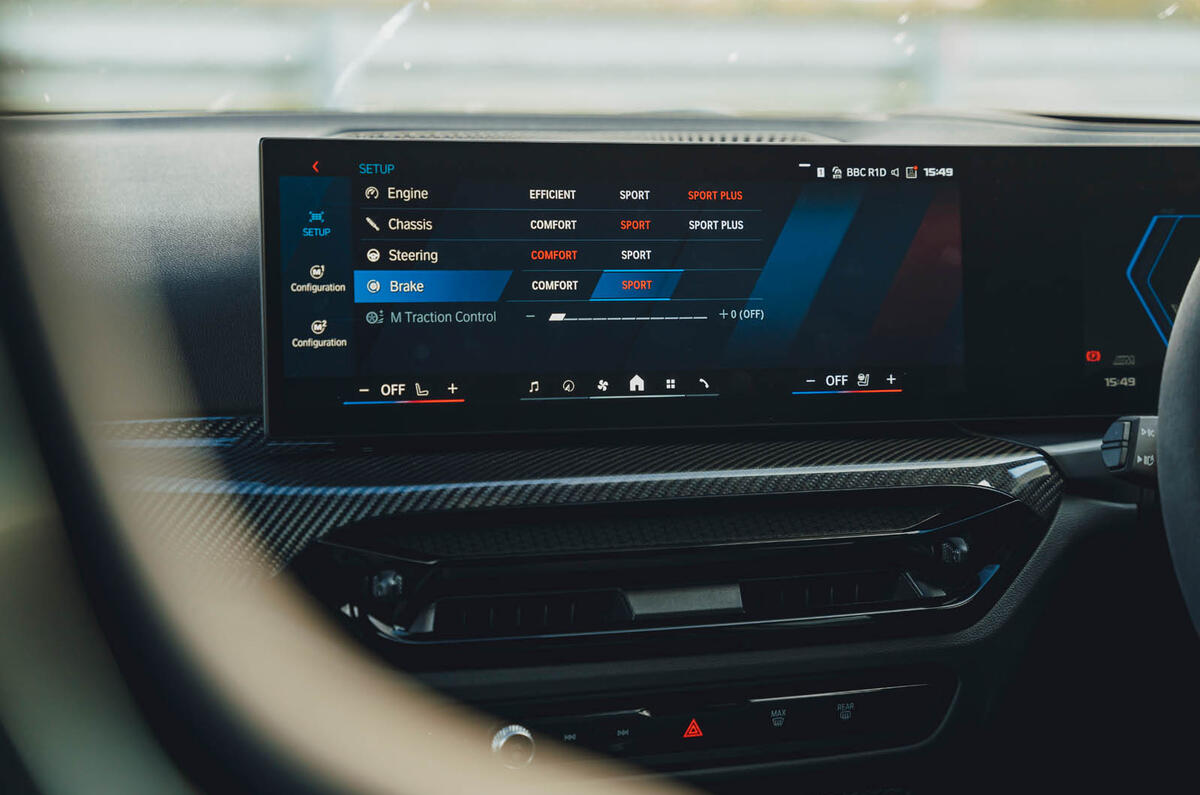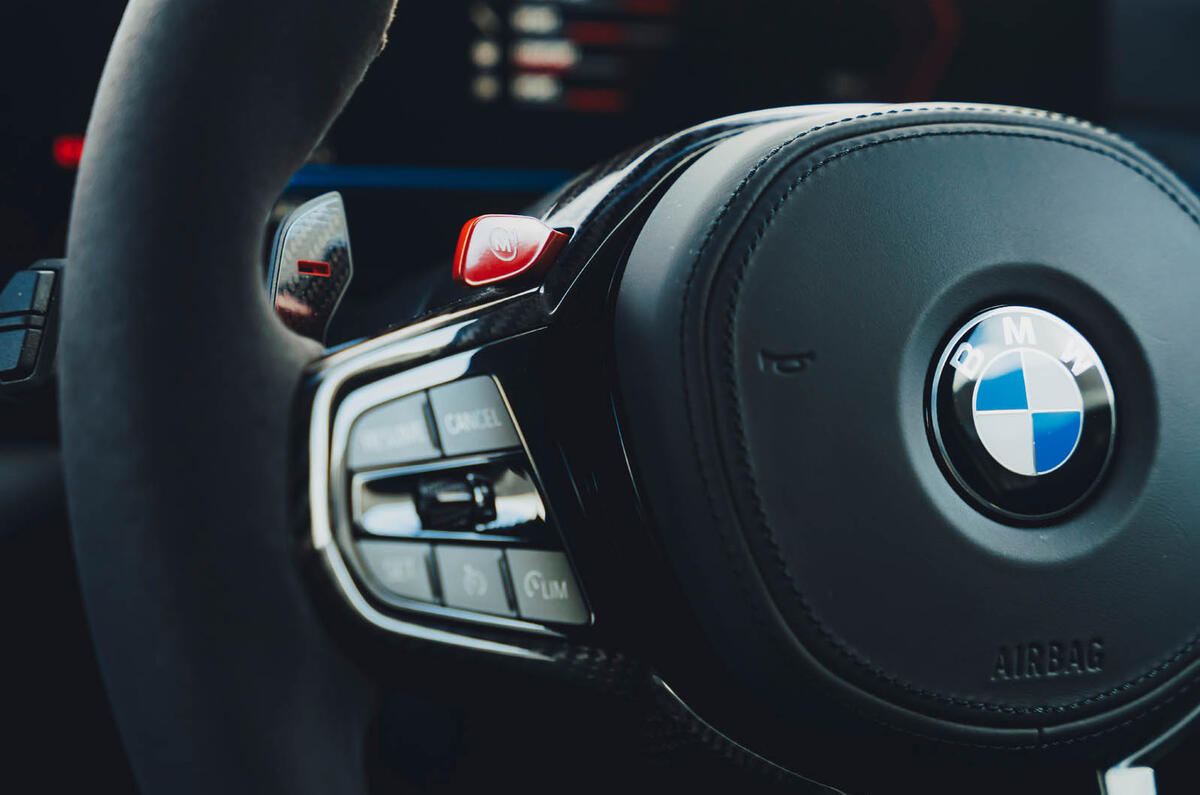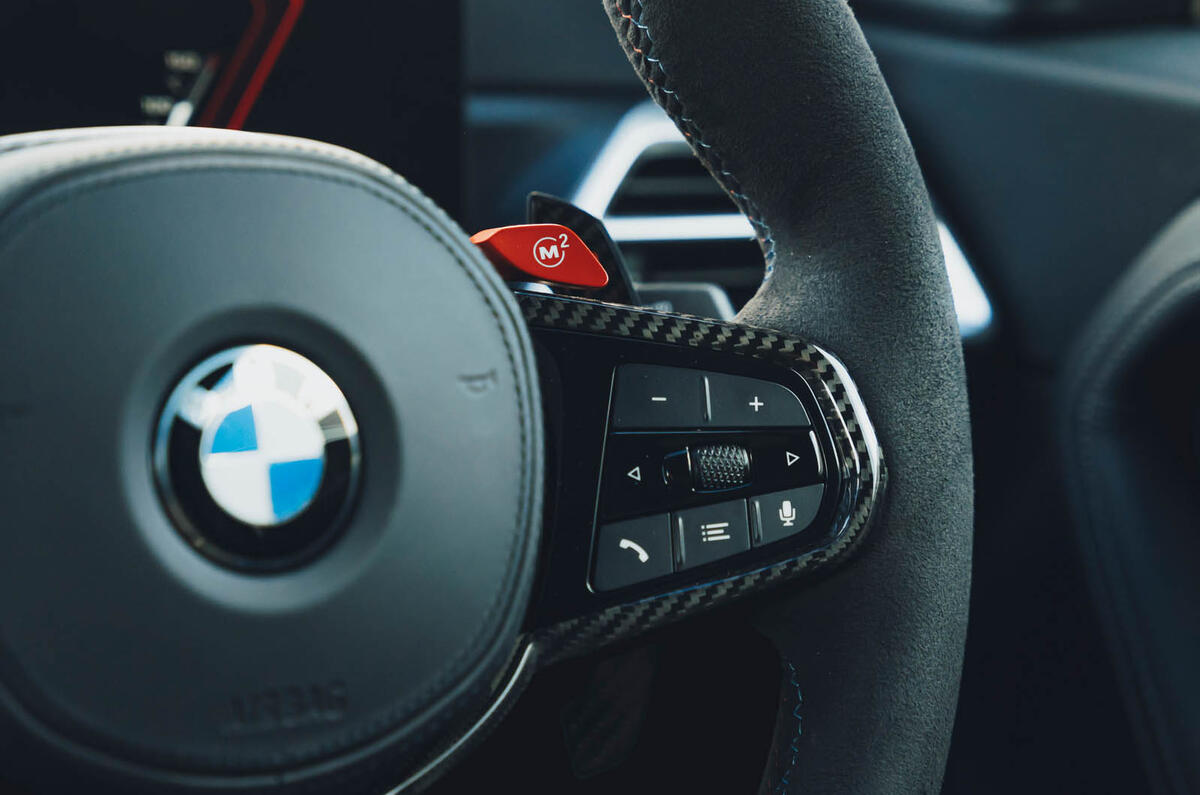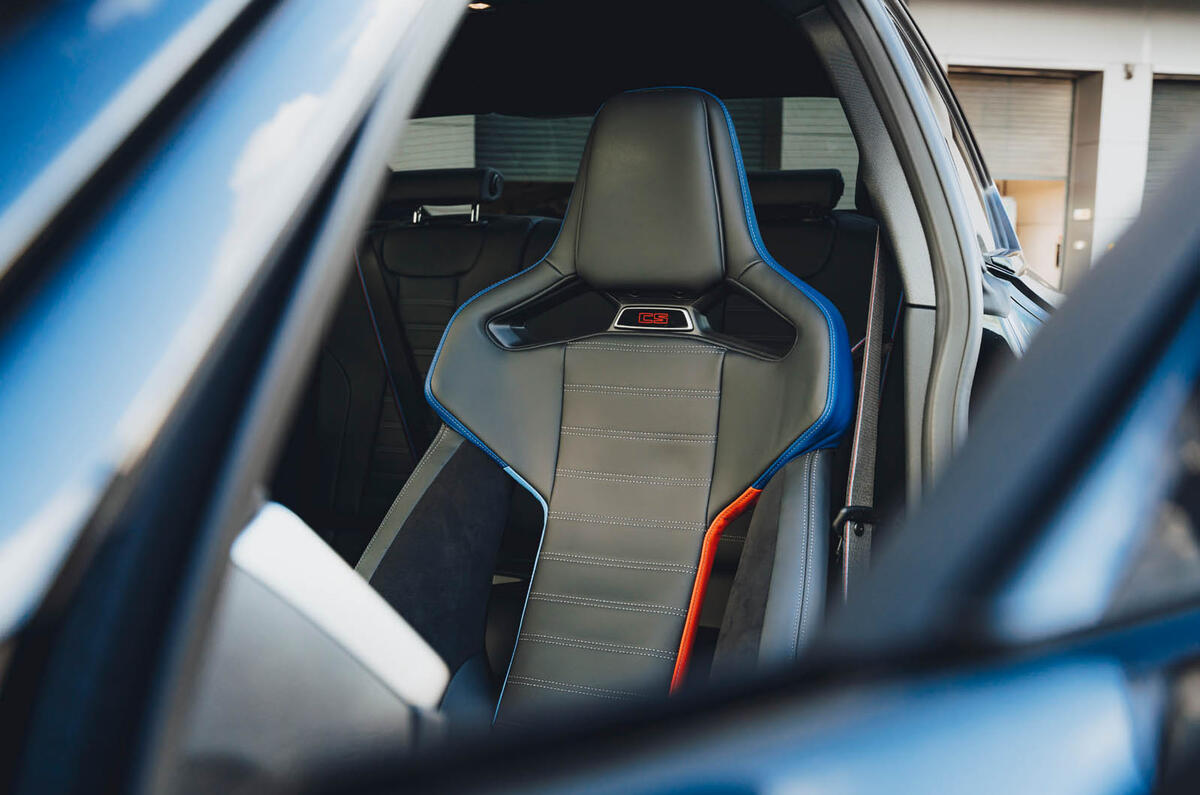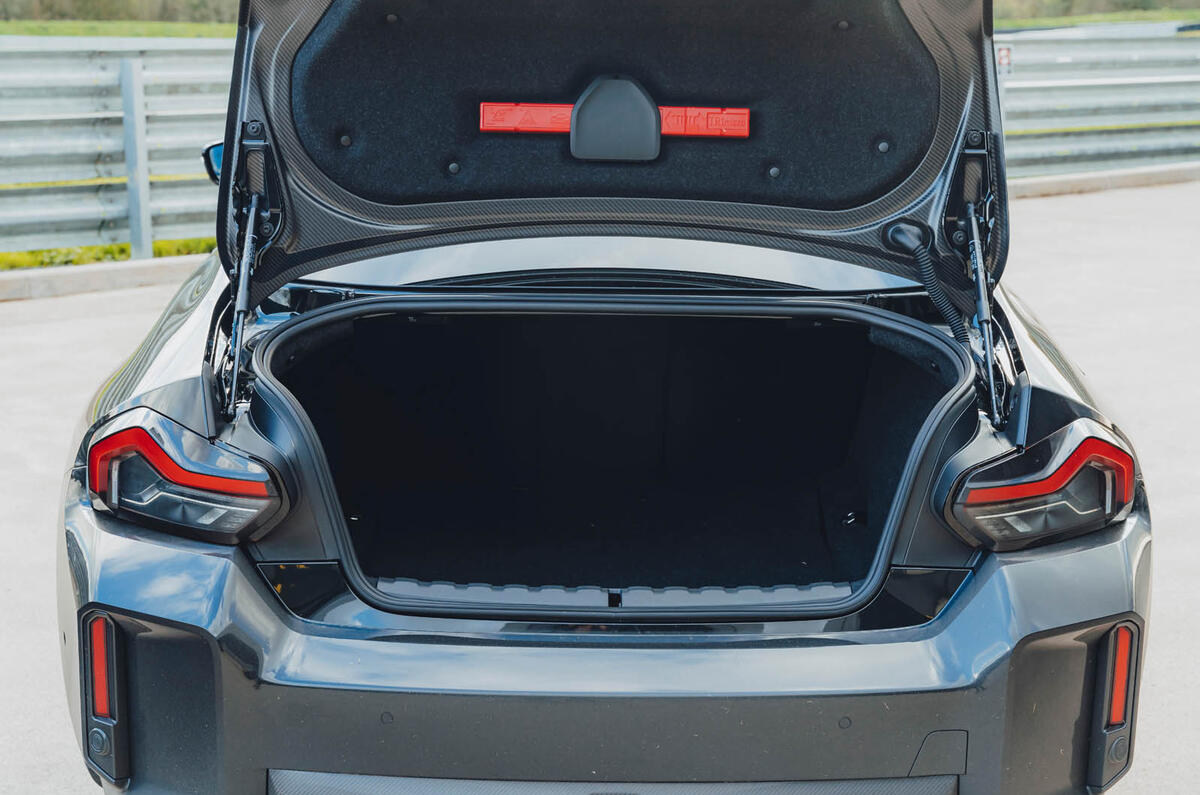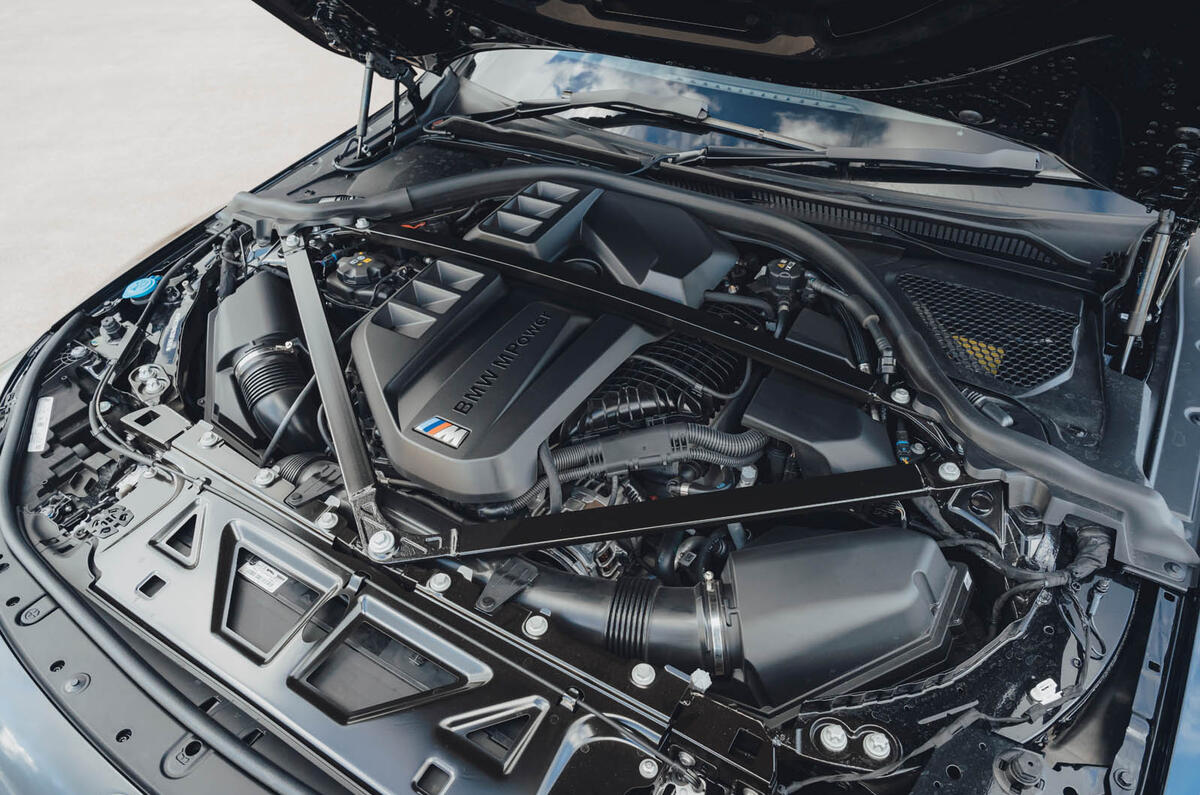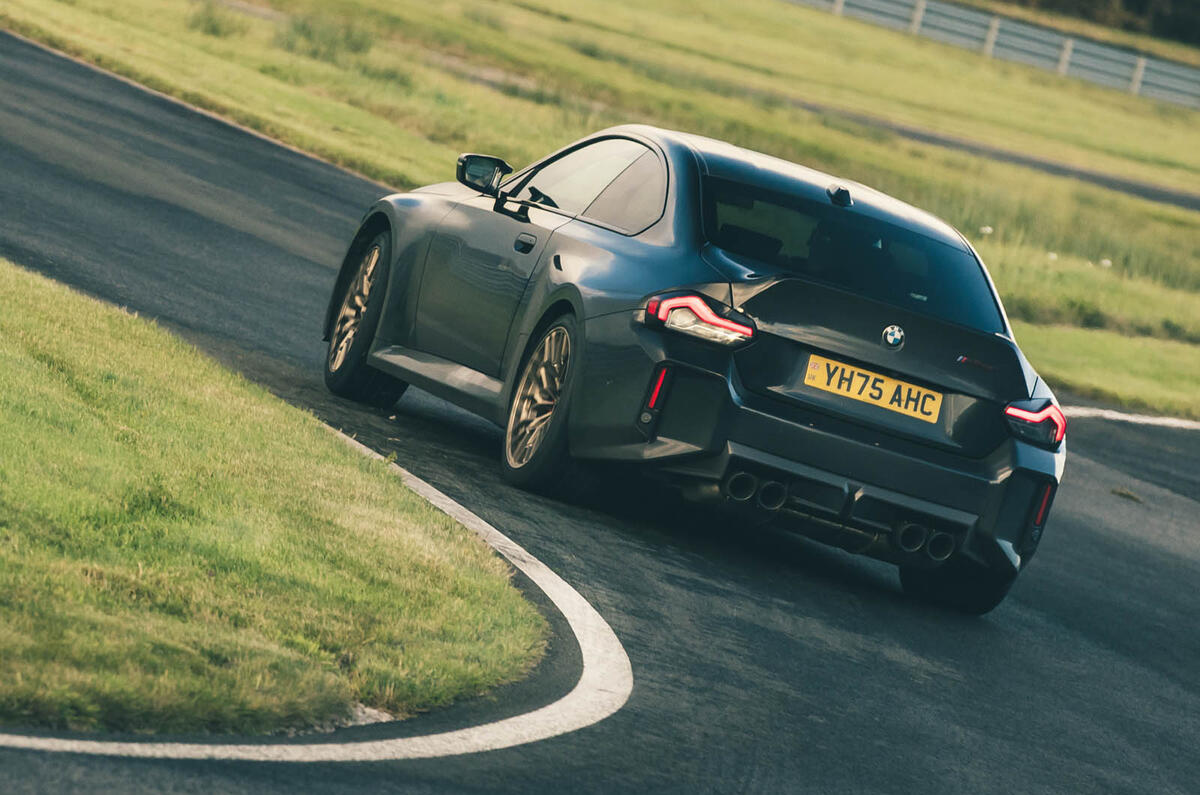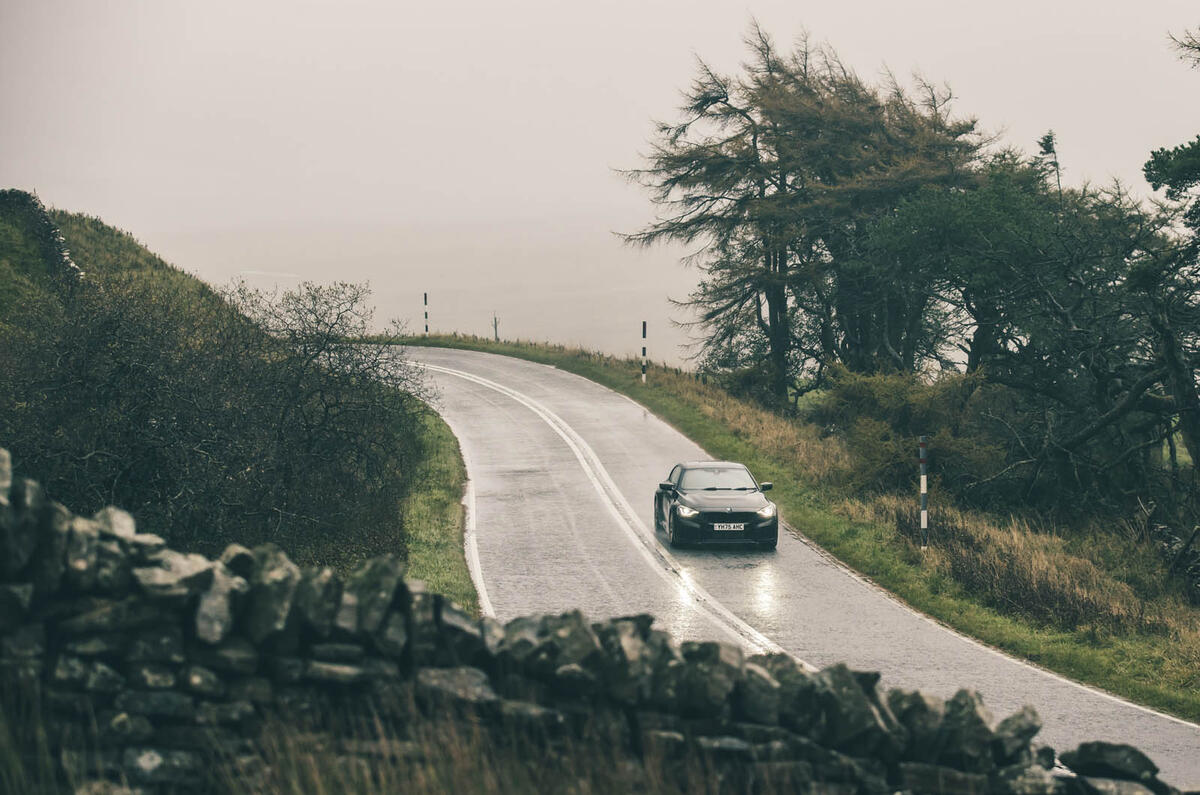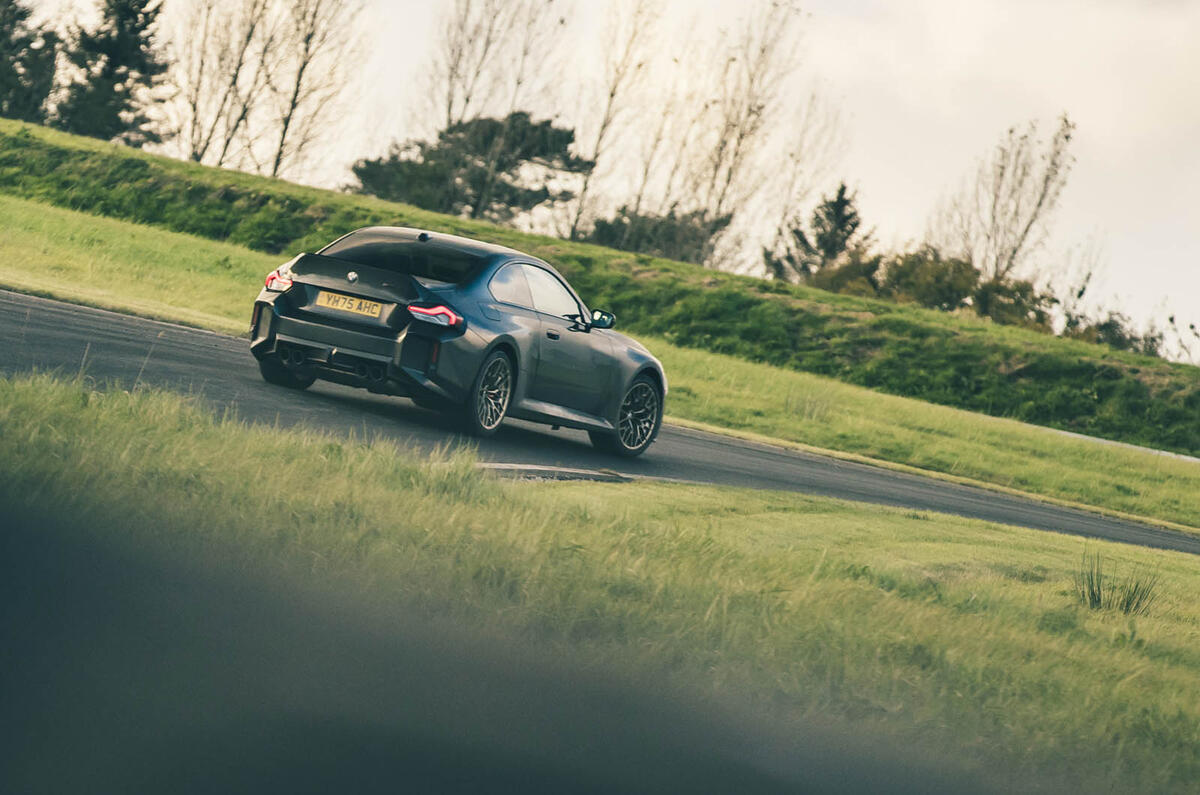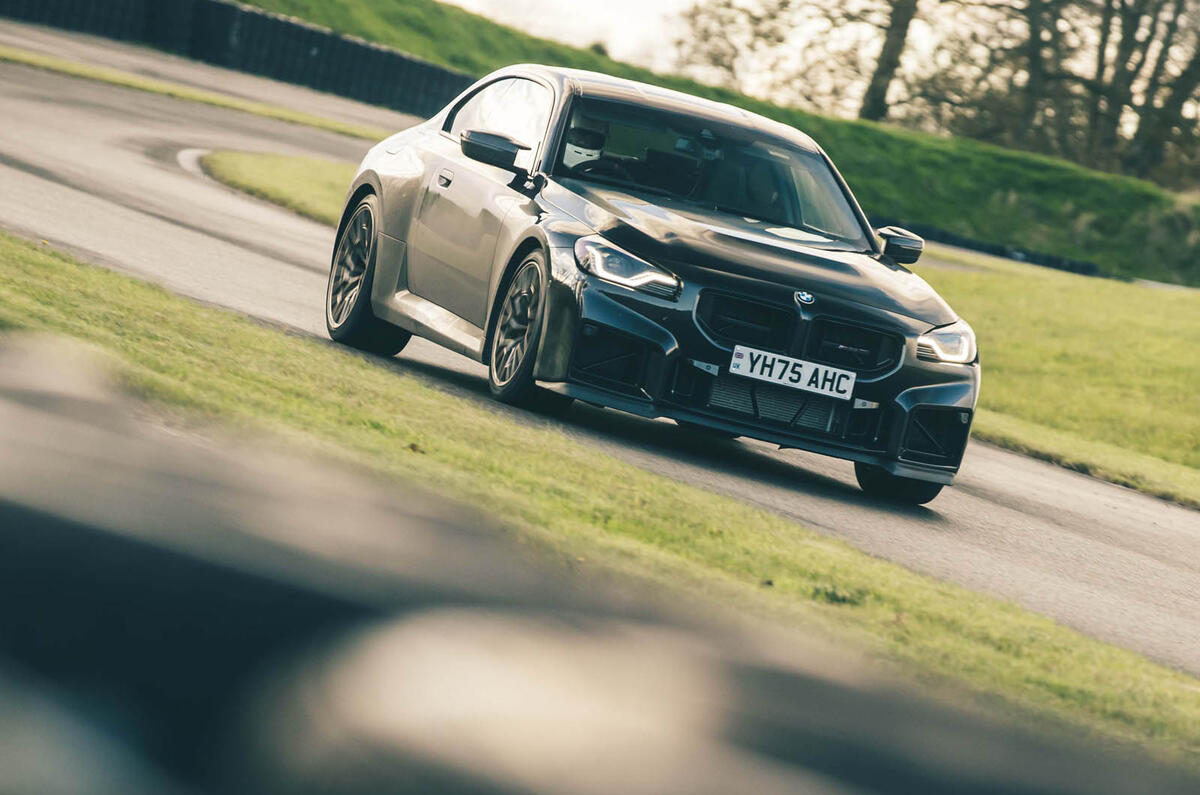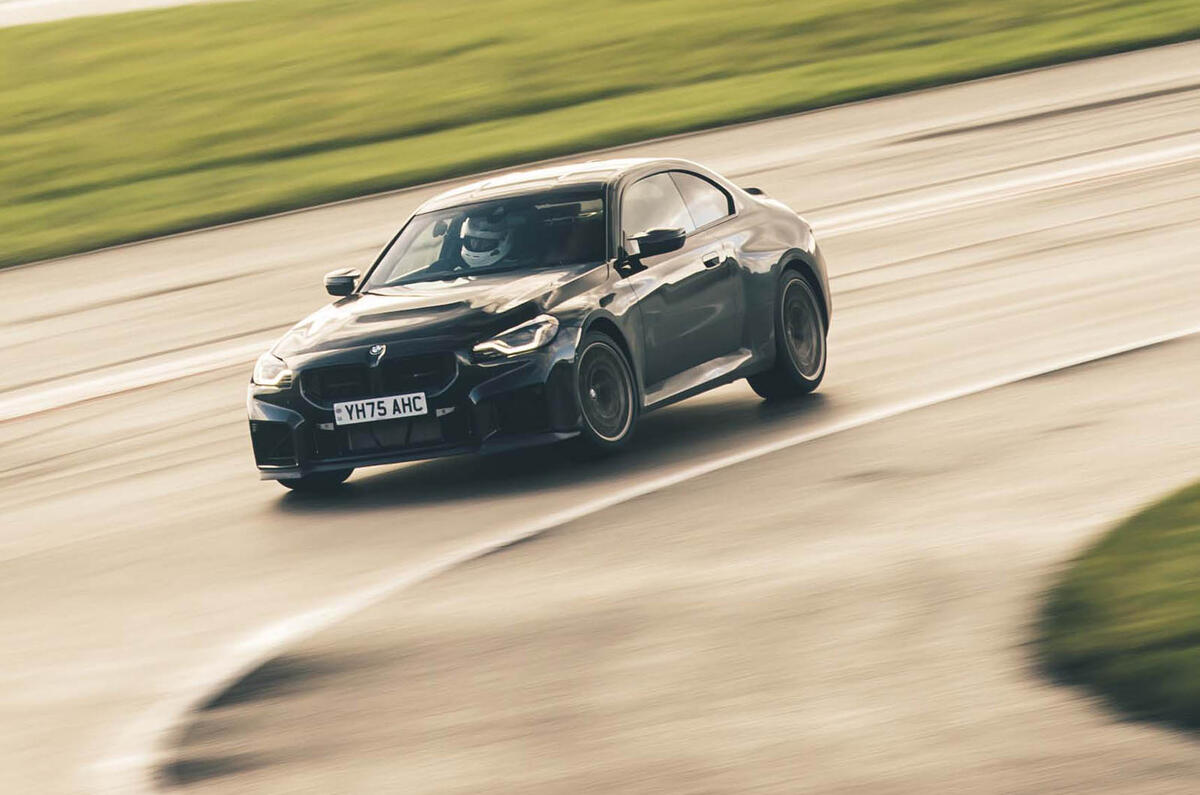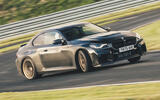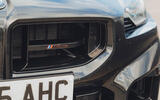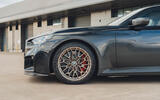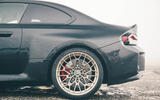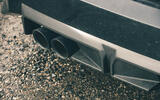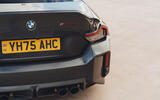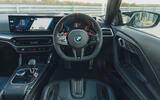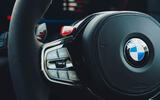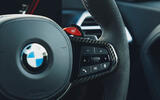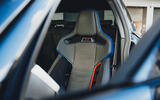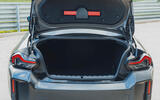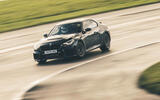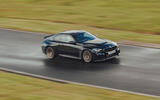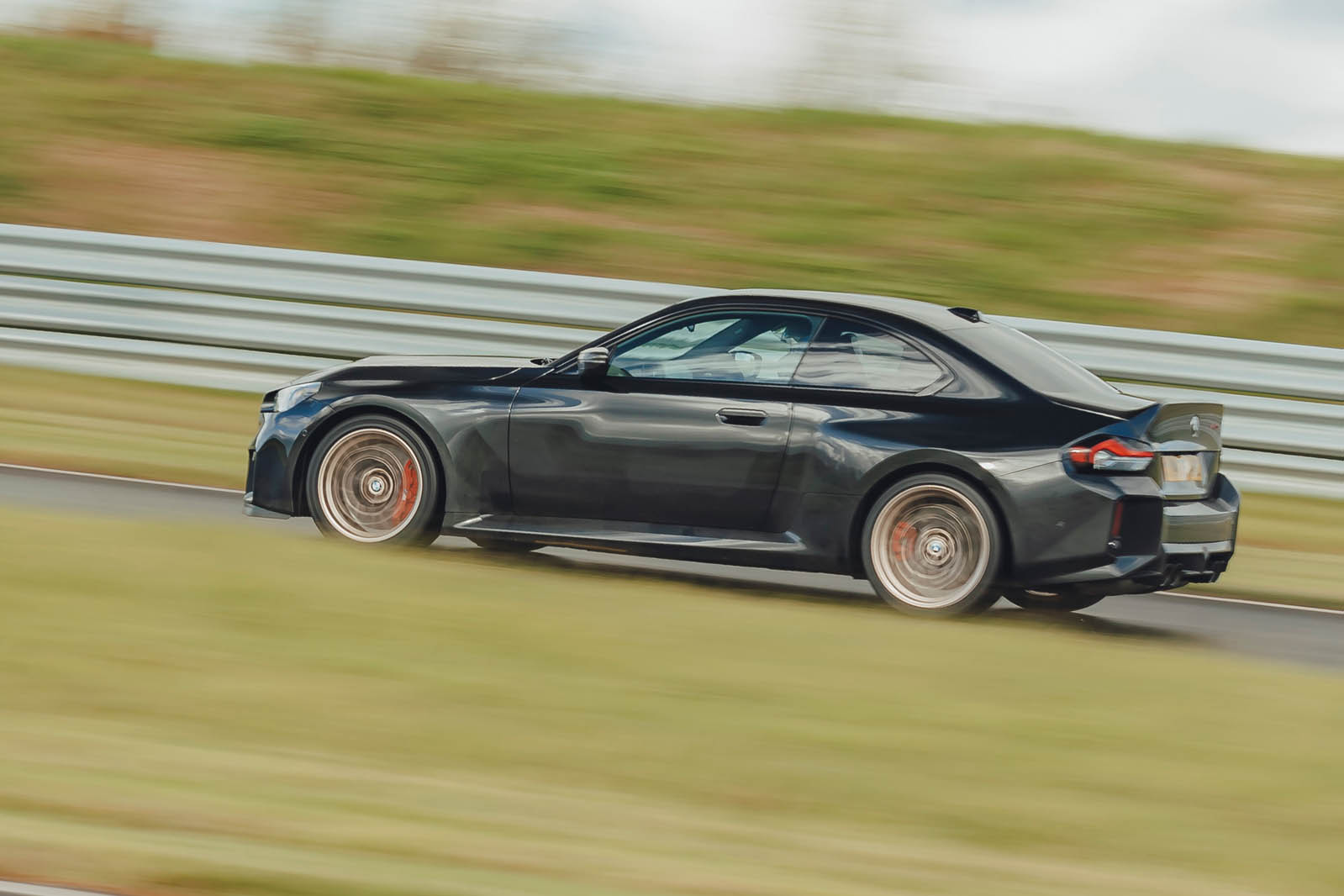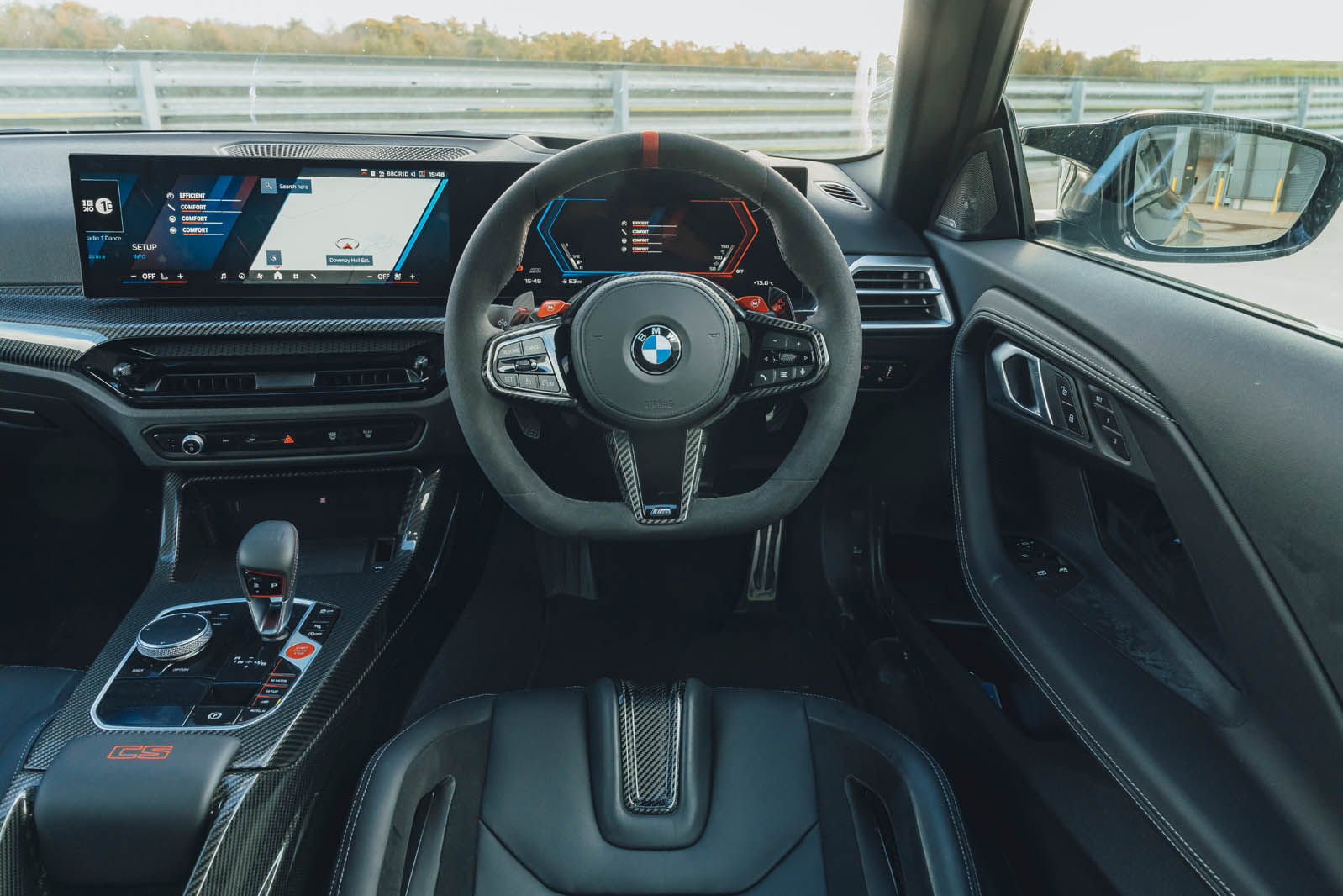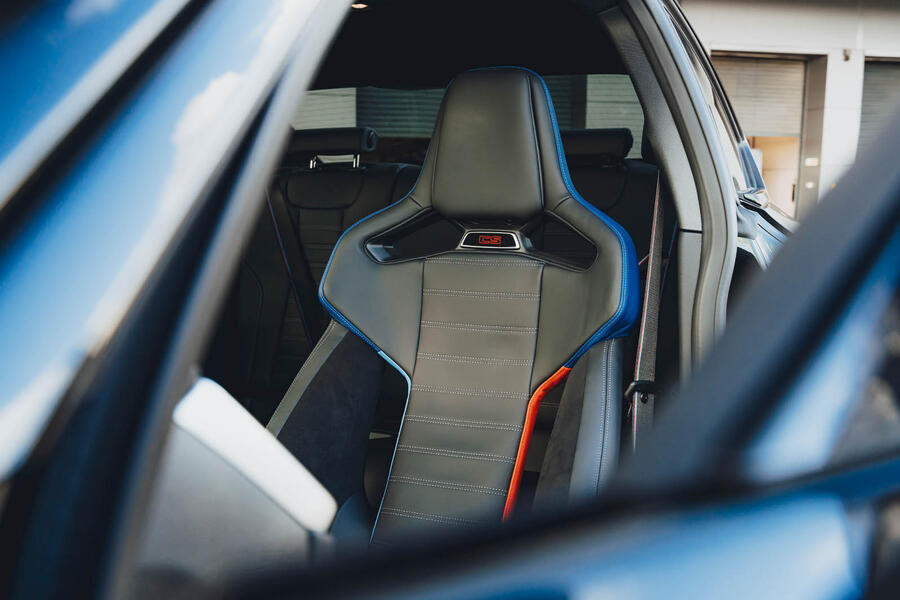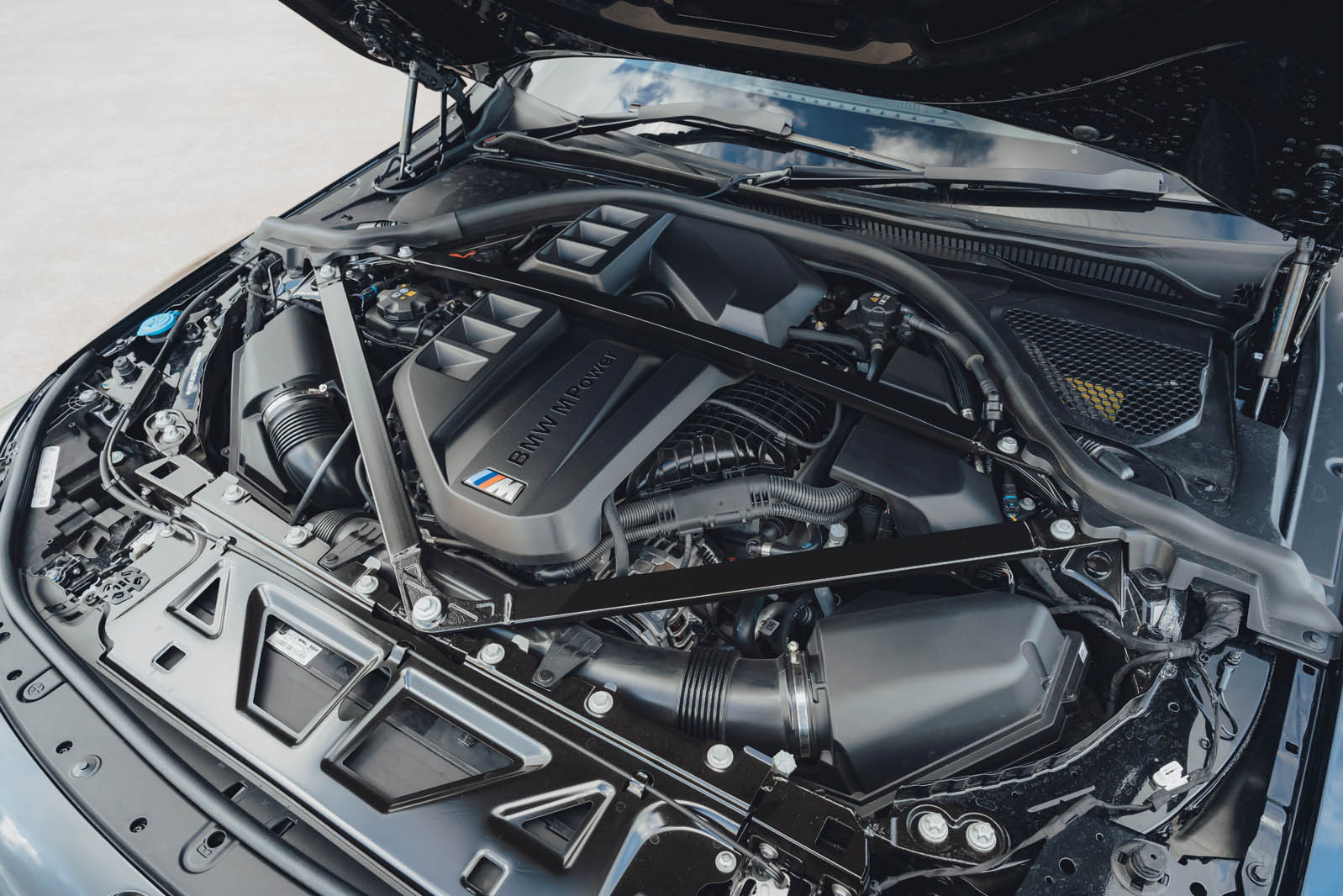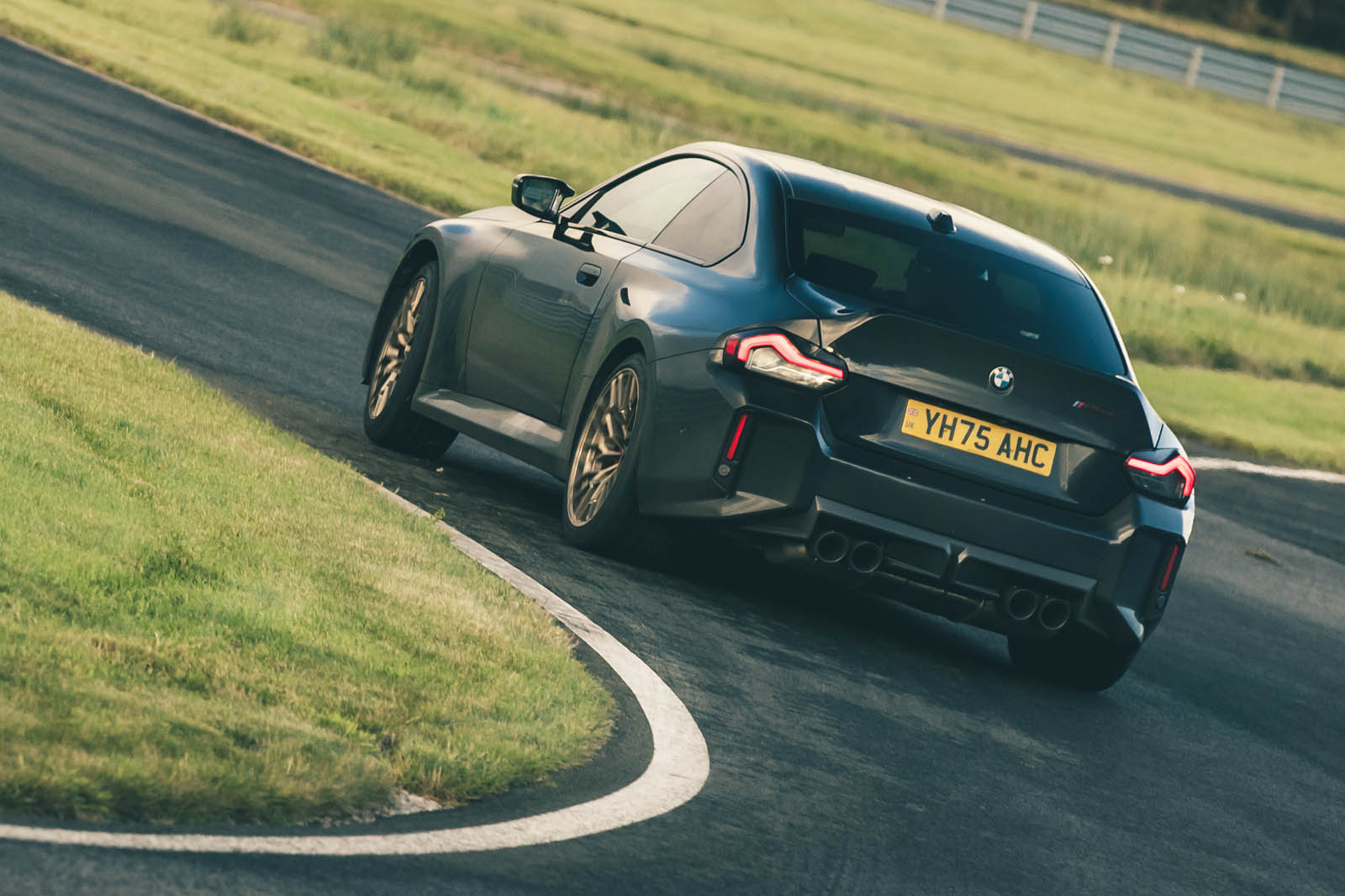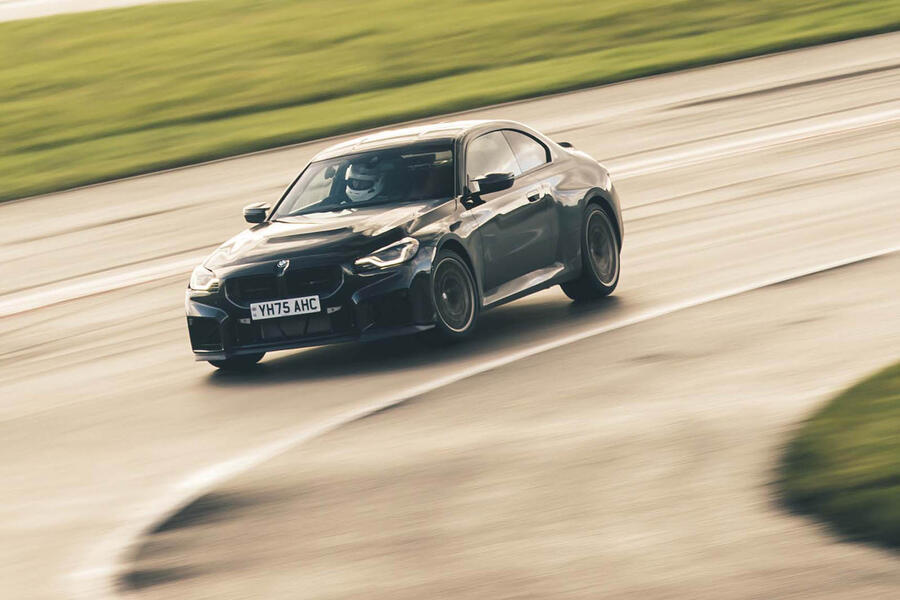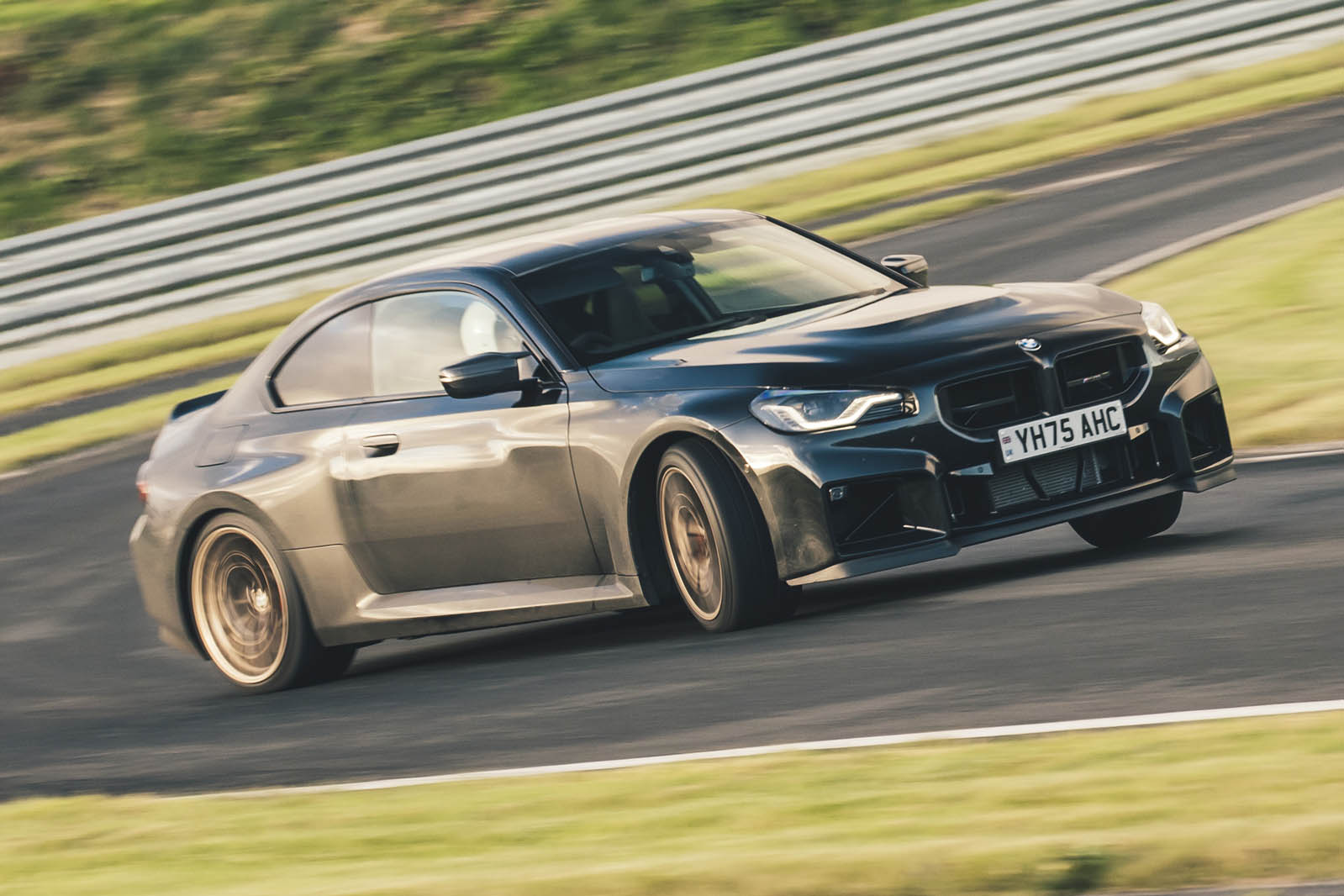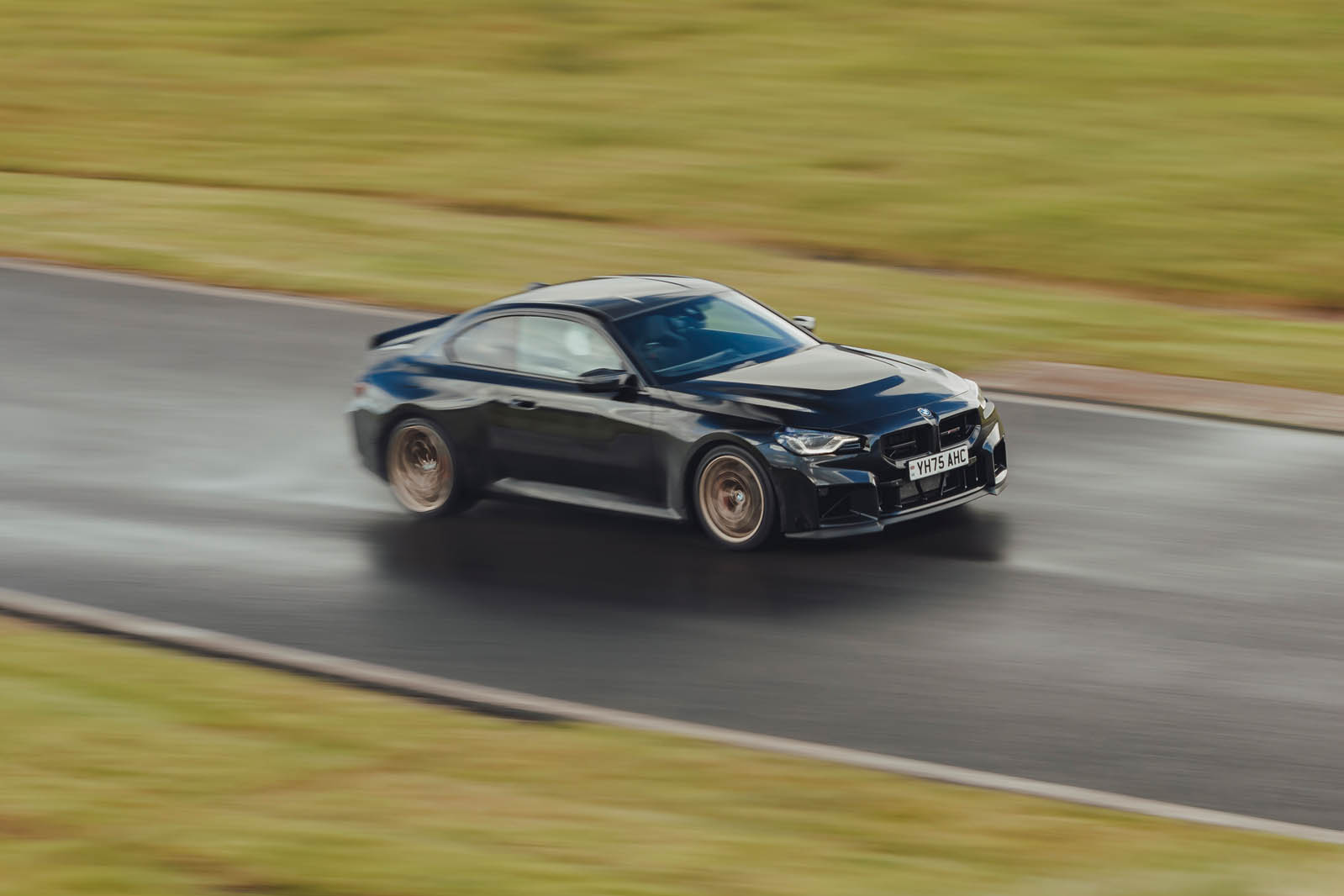The M2 CS’s firmer suspension springs and engine mounts make it feel sharper, rawer, tinglier and more forthcoming than a normal M2 in just about everything it does; and very seldom ordinary in any way, on any route you might take with it.
The car’s straight six vibrates its perfect-balance character into the cabin that bit more clearly, and lends the car a more dramatic persona, than a standard M2 as soon as you fire it up.
Running at the same state of tune at which it powers the M3- and M4 Competition, it doesn’t seem particularly highly strung; doesn’t struggle with latency when responding to the accelerator; and retains that wonderfully smooth, big-chested, linear- and unburstible-feeling mid range delivery as it revs. It also keeps working freely way up beyond 6000rpm. So it can be extended as far as you might need on track without punishing you for not hooking an upshift at just the right time; and isn’t fussy if you happen to skip a downshift on approach to a tighter bend, pulling from low revs just as willingly. It's a belting engine.
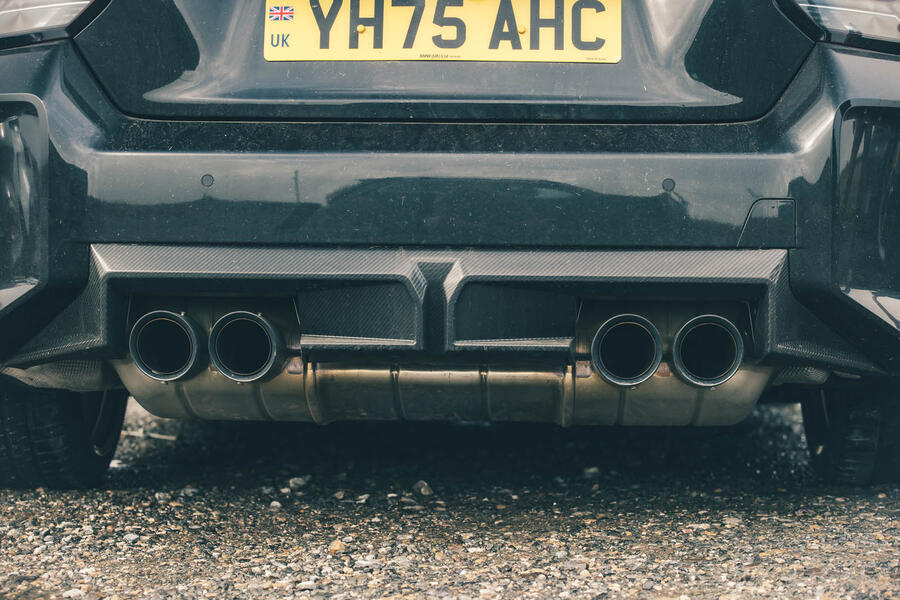
In terms of outright pace, the CS’s 523bhp and 479lb ft are made to feel like the result of even bigger hikes in output by its weight savings. And weight remains on this car’s side when you consider that BMW doesn’t offer rear-wheel drive versions of the larger M4 to UK buyers anymore; and that makes the M2 CS a good 150kg lighter than its bigger sibling, which is a big enough difference to feel pretty much anywhere.
On the road, the car’s much quicker than you’re likely to be able to tap into very freely; but not so fast that fully uncorking now and again feels utterly antisocial. But even on the track, it piles on speed with the appetite of lots of more expensive trackday fayre, and wouldn’t feel lost on big, wide tracks with long, testing straights.
Against the clock, this is the only M2 capable of 62mph from rest in less than 4.0sec. It’s clearly not a car that BMW M has been concerned about shaking up the performance hierarchy of its coupe models with, if only for a while; which is just another reason to like it.



